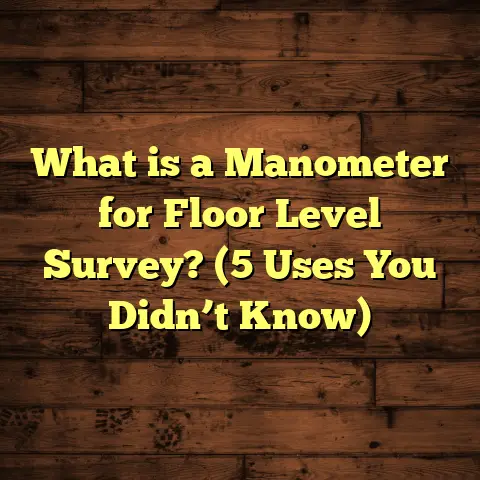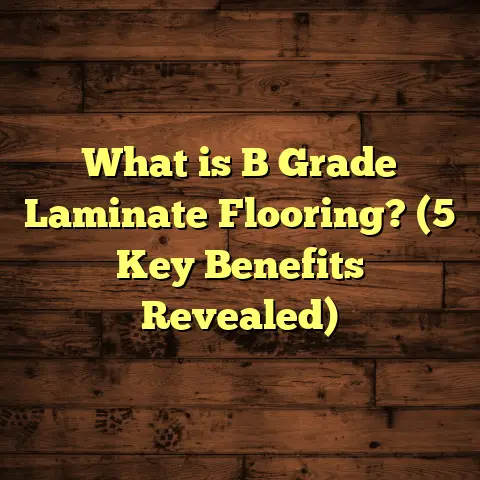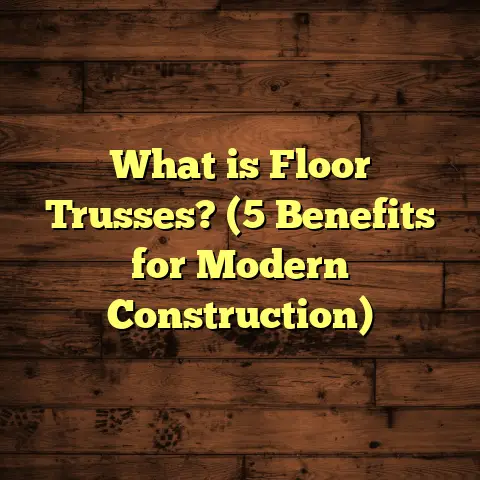What is LVT Flooring? (5 Reasons to Upgrade Your Space Today)
Imagine you’re standing in your living room, staring down at the floor beneath your feet.
What if you could have a surface that looks like real hardwood or stone, feels soft and warm,
and yet is tough enough to handle the chaos of daily life—spills, scratches, pets, and heavy foot traffic?
Sounds almost too good to be true, right? Well, that’s exactly what Luxury Vinyl Tile (LVT) flooring offers.
I want to take you on a journey exploring what LVT flooring is, why it’s become one of my favorite
flooring options to install and recommend, and how it might just be the perfect fit for your home or business.
What Is LVT Flooring?
So, what is LVT flooring exactly? The acronym stands for Luxury Vinyl Tile. It’s a type of resilient
flooring designed to mimic the appearance of natural materials like hardwood, stone, or ceramic tile—
but with a vinyl base that makes it waterproof, durable, and easier to maintain.
Unlike traditional vinyl sheets that come in large rolls and require gluing down over an entire floor,
LVT is manufactured as individual tiles or planks. These can be arranged in various patterns such as
straight lay, herringbone, or chevron to create custom looks just like with real wood or stone floors.
Anatomy of LVT Flooring
Understanding the layers of LVT helps appreciate why it performs so well:
- Wear Layer: This is the topmost transparent layer. It’s a tough coating designed to resist scratches, scuffs, stains, and general wear. The thickness of this layer varies by product and directly affects durability. For example, residential LVT typically has a wear layer between 12 mil (thousandths of an inch) and 20 mil thick; commercial-grade floors can go up to 40 mil or more.
- Design Layer: Just beneath the wear layer is a printed design film. This is where the magic happens—high-resolution images of wood grain, stone textures, concrete patterns, or even abstract designs are printed here. Thanks to advanced printing technology combined with embossing techniques that add texture, the visuals are incredibly realistic. You can actually feel the grain or stone bumps underfoot.
- Core Layer: This vinyl core provides resilience and waterproofing. There are generally two types: flexible vinyl cores that offer some give underfoot and rigid cores such as SPC (Stone Plastic Composite) or WPC (Wood Plastic Composite). Rigid cores add extra dimensional stability so the tiles don’t bend or warp easily.
- Backing Layer: The bottom layer adds stability and often includes an attached underlayment for sound absorption and comfort. Some LVT products have cork or foam backing laminated directly onto the tile for added cushioning and noise reduction.
Manufacturing Process
LVT manufacturing is a fascinating combination of art and science. It starts with printing the design layer—a process that uses either rotary printing or digital inkjet printing:
- Rotary Printing: A traditional method where a cylindrical drum coated with inks transfers patterns onto vinyl sheets. It’s fast and cost-effective but less flexible for customization.
- Digital Inkjet Printing: Uses advanced printers similar to those in photography to print ultra-high resolution images onto vinyl films. This method allows for more detailed and varied designs with fine texture replication.
Once printed, multiple layers—the design film, wear layer, core materials—are fused together using heat and pressure in a lamination process called calendering. This ensures strong bonding between layers without bubbles or defects. The final tiles are then cut into planks or squares ready for packaging.
Some manufacturers enhance wear layers with ceramic bead particles suspended in urethane coatings to increase scratch resistance while keeping clarity so designs shine through beautifully. Others use special polymer cores blended with limestone powders in SPC tiles to boost hardness and stability.
My Journey With LVT Flooring
When I started as a flooring contractor over a decade ago, hardwood floors were king in my recommendations.
They have undeniable beauty and add long-term value to homes. But over time I noticed many clients
were hesitant about hardwood due to its maintenance demands: refinishing every few years, susceptibility
to moisture damage, and vulnerability to scratches from kids and pets.
One day I was installing hardwood in a busy family home when the dog knocked over a water bowl near the
doorway. Despite quick cleanup, I could already see minor buckling starting to form in planks near the spill
area—classic wood swelling due to moisture exposure. The client was frustrated because this was a brand-new floor.
That experience pushed me to seek alternatives that offered similar aesthetics but better durability and ease
of care. That’s when I discovered LVT flooring—and it changed how I approached projects completely.
I installed my first big LVT job in a client’s kitchen-dining combo area where moisture and foot traffic were high
concerns. The floor looked stunning—like real wood but better able to handle spills and scuffs from four lively kids.
A year later when I checked back, the floor looked as great as day one with zero signs of water damage or wear.
That project convinced me LVT wasn’t just a “cheap vinyl” option but a premium product worthy of serious consideration.
Since then I’ve installed LVT in hundreds of homes and offices—from cozy bedrooms to commercial lobbies—
and I’m always impressed by how it balances style with toughness.
5 Reasons You Should Consider Upgrading Your Space With LVT Flooring Now
1. Realistic Looks That Impress Without Fuss
LVT can replicate almost any natural material you can imagine—wood planks with intricate grain patterns,
marble veins with subtle color variations, slate stones with rough texture—even exotic hardwood species
that are rare or expensive in real life.
I remember installing a wide-plank oak-look LVT floor in a client’s living room who was adamant about avoiding
real wood because of her dog’s nails scratching floors in past homes. The finish was so convincing that visitors
had no idea it wasn’t hardwood until she told them.
Thanks to high-definition printing combined with embossing technology that adds texture matching the visual pattern,
you get both the look AND feel of natural floors.
Plus, unlike real wood or stone which can fade over time from sunlight exposure or staining from spills, LVT’s color
and design remain stable because they’re sealed beneath the wear layer.
2. Durability That Goes Beyond Expectations
Durability is where LVT really shines compared to other flooring options like engineered wood or laminate.
The wear layer on LVT protects against scratches from pets’ claws or moving furniture—something I’ve seen firsthand
in homes with energetic kids and multiple dogs.
For context: wear layers range from about 12 mil (0.012 inches) for lighter residential use up to 40 mil or more for
commercial-grade applications.
A study by the Resilient Floor Covering Institute found that LVT floors with 20 mil wear layers can last upwards of 15 years under heavy residential use before needing replacement.
Rigid core LVT products like SPC add extra strength preventing dents from dropped heavy objects—another benefit I’ve
personally tested when tools accidentally dropped during renovation jobs caused no visible damage.
3. Waterproof Flooring That Handles Life’s Messes
Waterproof floors are a must-have in kitchens, bathrooms, laundry rooms—and if you have kids or pets—it’s even more critical.
Unlike hardwood which swells and warps when exposed to water for extended periods, LVT’s vinyl core is completely impervious to moisture.
I’ve installed LVT in numerous bathrooms where splashes from showers or sinks are common and never had one report of water damage or mold growth under the floor.
To put it simply: if you want beautiful flooring that won’t buckle or peel after accidental spills or steam exposure, LVT delivers consistently.
4. Easier Installation Means Faster Remodels & Lower Costs
Installing hardwood or tile floors often requires subfloor prep, adhesives, grout work, and significant labor time.
With many LVT products now featuring click-lock systems that snap together without glue or nails installation becomes simpler and faster.
This ease means less mess on site—no drying times for adhesives—and often allows skilled DIY enthusiasts to install their own floors without professional help.
On bigger projects where I work as a contractor, faster installation means I can schedule follow-up work sooner which keeps timelines tight and clients happy.
When estimating costs for my projects I use tools like FloorTally that factor in local labor rates plus material prices helping me avoid surprises on budgets by accounting for waste factors and installation complexity upfront.
5. Comfortable Underfoot & Quieter Spaces
Have you ever walked barefoot on ceramic tile only to wish you were wearing slippers? Hard floors feel cold and unyielding.
LVT’s vinyl base combined with optional attached underlayment layers makes standing more comfortable on your feet during long cooking sessions or playtime with kids.
The attached cushion also helps absorb sound reducing echo and footfall noise—a big bonus for multi-story homes or apartments where noise transfer can be an issue.
Interesting Data Points & Industry Insights
Here are some facts that reinforce why LVT has rapidly grown in popularity:
- In 2023, the global vinyl flooring market was valued at approximately $30 billion USD with projections estimating about 5% annual growth over the next five years due to rising demand for durable yet stylish flooring solutions worldwide (source: MarketWatch).
- LVT accounts for nearly 40% of all vinyl flooring sales globally thanks to its versatility across residential and commercial sectors (source: Freedonia Group).
- Consumer research surveys show that 75%+ of homeowners who switched from hardwood or laminate to LVT reported higher satisfaction levels related to maintenance ease and durability (source: National Floor Trends).
- Installation time comparisons reveal click-lock LVT floors take 30-50% less time than traditional hardwood installations on average (source: Floor Focus Magazine).
These stats align closely with my own project experiences: clients love the look combined with practical benefits—and contractors appreciate how efficiently LVT installs compared to other surfaces.
Manufacturing Details That Make a Difference
Understanding how LVT is made explains why some brands perform better than others—or cost more but deliver longer-lasting value:
- High-resolution printing technology now allows manufacturers to create designs with millions of pixels per inch resulting in intricate grain details you can actually feel thanks to embossing aligned perfectly with visuals. Some top brands even use photographic scanning of real wood species for authenticity.
- The wear layer often contains ceramic bead particles embedded within urethane coatings providing excellent scratch resistance without dulling finish clarity—a key innovation that boosts longevity especially in high traffic areas.
- In rigid core products like SPC flooring, manufacturers blend PVC resins with limestone powder fillers creating dense composite cores resistant to dents and temperature fluctuations common in sunlit or humid rooms. This level of engineering ensures flatness over time preventing gaps or curling edges common in cheaper vinyl floors.
- Some luxury lines add antimicrobial treatments within wear layers helping inhibit bacterial growth—a feature growing in demand especially post-pandemic for commercial spaces like hospitals or schools.
Knowing these technical specs helps clients understand why investing a bit more upfront can save money down the road through fewer repairs or replacements.
Using FloorTally for Accurate Cost Estimates & Planning
Budgeting flooring projects can be tricky because you need to factor materials (LVT planks/tiles), installation labor rates (which vary widely by region), disposal costs for old floors if applicable, plus waste factors accounting for cuts and mistakes.
I use FloorTally regularly because it consolidates all this info into one easy platform tailored by local market data so my quotes are realistic every time.
For example: If I input a room size of 400 sq ft with an estimated 10% waste factor for irregular cuts plus product choice specifying wear layer thickness and backing type—FloorTally calculates both material quantities needed AND labor cost estimates based on current local rates.
This helps me avoid underbidding jobs which leads to frustration later—or overbidding which scares off potential clients.
It also lets me compare different product options side-by-side showing how choosing a thicker wear layer might increase initial costs but reduce replacement expenses over time—a valuable insight when advising clients on long-term value versus upfront price.
Common Questions I Get About LVT Flooring
Can LVT Be Installed Over Existing Floors?
Yes! One feature that makes LVT popular is its ability to be installed over many existing hard surfaces like concrete, plywood, vinyl sheets, even some tile floors as long as the surface is clean flat and structurally sound.
This saves time removing old floors thus reducing remodeling disruption and cost.
How Long Does LVT Flooring Last?
With proper care, quality residential LVT can last anywhere from 10–20 years depending on wear layer thickness and traffic conditions.
Commercial-grade versions designed for heavy foot traffic can last up to 25 years before needing replacement.
Is LVT Easy To Maintain?
Absolutely! Regular sweeping or vacuuming plus occasional damp mopping with manufacturer-approved cleaners keeps floors looking new without waxing or refinishing required like hardwood does.
Does LVT Flooring Fade Over Time?
High-quality LVT resists fading even when exposed to sunlight thanks to UV stabilizers added during manufacturing layers protecting printed images beneath wear coats.
Can I Use Rugs Or Furniture Pads With LVT?
Yes! Using furniture pads prevents heavy pieces from denting floors especially if you have rigid core varieties.
Area rugs protect high-traffic zones while adding style without harming vinyl tiles underneath.
Personal Tips From My Experience Installing & Maintaining LVT Floors
- Always measure twice before ordering! Adding 7-10% extra material covers waste from cuts plus future repairs without overspending excessively.
- Choose thicker wear layers if you have pets or kids—they make a noticeable difference in scratch resistance over time.
- If possible opt for rigid core options like SPC for kitchens or entryways where dropped objects might cause damage on more flexible vinyl types.
- Use felt pads under furniture legs especially metal chairs/tables which can scratch even tough wear layers during movement.
- Clean spills promptly even though vinyl is waterproof; standing liquids might seep through unsealed seams causing issues underneath over years.
- Avoid abrasive cleaners or steam mops which can damage wear layers prematurely.
Case Study: Transforming a Family Room With LVT Flooring
One of my favorite projects involved upgrading a family room used by two young kids plus an energetic dog who loved muddy paws after outdoor playtime.
The original carpet was stained beyond repair and hardwood wasn’t practical due to high moisture from nearby kitchen spills plus pet scratches previously experienced there by the owners.
We chose a rustic oak-look SPC-LVT product featuring a 20 mil wear layer plus attached cork underlayment for noise reduction.
Installation took only two days including removal of old carpet padding underneath plus minor subfloor leveling work.
After one year follow-up: no visible scratches despite dog running indoors daily; no water damage from accidental spills; family reported much easier cleaning routine compared to carpet; guests continually complimented how natural the floor looked yet how comfortable it felt underfoot compared to tile alternatives they’d seen elsewhere.
This project taught me how well-designed LVT solves multiple problems at once—style, durability, maintenance ease—all critical factors families juggle daily when choosing new floors.
Wrapping Up My Thoughts On LVT Flooring
If you want flooring that looks beautiful without constant worry about damage; offers waterproof reliability; installs quickly saving time; provides comfort underfoot; AND fits budgets reasonably—you should seriously think about LVT flooring options for your next upgrade.
From personal experience installing hundreds of projects plus reviewing industry research data I trust this material more than ever as an ideal solution balancing aesthetics with real-world performance needs families face today.
If budgeting feels overwhelming don’t hesitate to try tools like FloorTally which help me estimate costs accurately based on local rates reducing guesswork so you get clear expectations upfront instead of surprises later.
What kind of look do you want for your home? Wood warmth? Stone coolness? Or something totally unique?
Let’s chat if you want help deciding if LVT fits your lifestyle—you might be surprised how much it could improve your space while saving headaches down the line!





